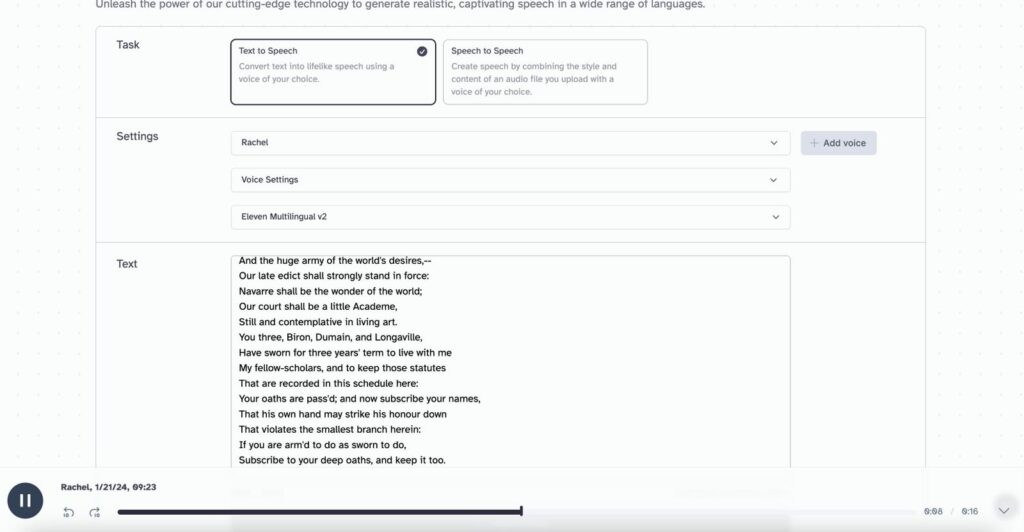UNITED KINGDOM – SEPTEMBER 07: Marconi – B.B.C. ribbon microphone type AXBT no. 297369/11780A. This … [+]
SSPL via Getty ImagesFor as much excitement as there is around AI at the moment, most of the practical applications discussed in the public are around Chat GPT. Chat GPT is a powerful tool – don’t get me wrong, but it is not the whole of what AI is capable of at the moment. Over the next several weeks, I will write some articles dedicated to other practical applications of AI you could consider using in your business today, that are not just centered around text generation.
Text to Voice Technology is Here to Stay
With the 2024 election coming up, deepfakes are going to dominate the media conversation. Text-to-voice deepfakes in particular are extremely hard to detect – humans can only reliably detect fake voices under ¾ of the time.
And while deepfakes provide a dystopian view of a scary future, there are also practical applications of text-to-speech that are beneficial for humanity, and can be used today in business settings.
A few of the companies working on text-to-speech technology are:
How does text to speech technology work?
Text-to-speech (TTS) technology ingeniously converts written text into spoken words, making digital content audible. It begins by dissecting the text into smaller parts, like sentences and words, and then into the very sounds of speech. The technology focuses on understanding grammar and the meaning of the text you feed it (so the speech itself sounds fluent in whatever language intended). This involves interpreting not just what the words are, but how they should be said – with the right emphasis and tone. A significant part of this process involves machine learning, where the system learns from large amounts of spoken language data, continually improving its ability to mimic human speech.
A step by step guide on how to get started with TTS today
A screenshot of the Eleven Labs dashboard with TTS technology used in real life.
Sunil RajaramanSo how can you try TTS today for very cheap? This is not an expensive technology to use – the entry plan for Eleven Labs is actually free.
- Sign up for a plan with one of the providers I shared above – you can use a Google work address
- Identify a corpus of text that you own, or is in the public domain that you want turned into voice. For the purposes of this example, I am using Shakespeare since all of his work is now in the public domain.
- Simply hit generate – once the file is generated you have the ability to download it. I created a link with the output here.
Applications of TTS
Any business could, and should be considering using TTS today. The applications include:
- Converting old content into podcasts
- Converting old training material into more digestible learning modules for new employees
- Translation – you can translate content into multiple languages using TTS, using correct context and tone
- Customer service – TTS can be used to help the customer service process
There are obviously many other ways it can be used today, but please consider getting started with it – it’s one of the more advanced areas of AI and it is only going to get better from here.
